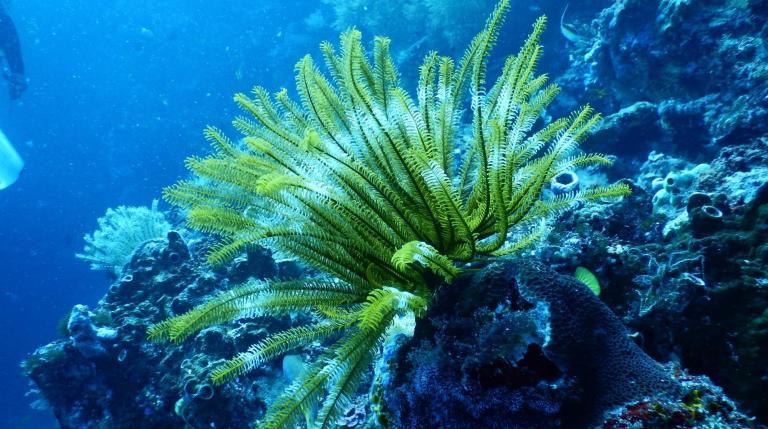Restored and properly protected coastal and marine ecosystems bring substantial health, social and economic benefits to coastal communities and the EU and Associated Countries as a whole. The need for stronger action is all the more acute as marine and coastal ecosystem biodiversity loss is severely exacerbated by global warming.
Achieving a good environmental status of marine ecosystems, will be accomplished not only through protected areas and the restoration of important ecosystems but also by the ways we use the sea so that we no longer endanger food security, fishers’ livelihoods, and the fisheries and seafood sectors. The EU biodiversity strategy for 2030 underlines the application of an ecosystem-based management approach to reduce the adverse impacts of fishing, extraction, mining and other human maritime activities, taking into account pressures from land-based activities, especially on sensitive species and seabed habitats. To support this, national maritime spatial plans should aim to cover all blue economy sectors and take into account the natural ecological features and the link between them.
Experience and lessons learnt from existing marine protected areas (MPAs) show that our capacity to identify ideal locations for MPAs, their sizes, borders, management practices and their connectivity fails to consider the different aspects of biodiversity attributes, to recognise climate change impacts and lacks a sound scientific base in relation to certain aspects. The optimal locations, connectivity and restrictions in MPAs required to achieve the protection of biodiversity and ecosystem services remain uncertain and are likely to become even more dynamic as the marine environmental conditions are changing fast.
So far, there has been a predominance of MPAs and projects concerned with genes and species and less with individual traits and inter-specific processes, and very few addressing large-scale habitats and ecosystem level processes. Knowledge and scientific approaches are still lacking to address all biodiversity attributes using a coherent and systemic approach. Links and feedbacks between and within biodiversity attributes, ecosystem services and policy implications are lacking.
By building on and integrating existing knowledge and results from multiple origins, including other EU and national projects, research and innovation could pave the way to fill present gaps on marine biodiversity and its management by better linking spatially ecological features with socio-economic elements. It can also have potential links with activities funded by the European Maritime, Fisheries and Aquaculture Fund (EMFAF), in particular calls and projects on Maritime Spatial Planning.
Objectives of the call:
• Design of ad hoc innovative flexible socio-ecological management to cope with a rapidly changing environment for coastal, offshore and deep-sea marine ecosystems, taking into account their connectivity, including through deep-sea migratory species, and the need to preserve their inherent natural dynamics.
• Where relevant, creating links to and using the information and data of the European Earth observation programme Copernicus, the Group on Earth Observations (GEO) and the Global Earth Observation System of Systems (GEOSS) is expected
• Proposals should outline a plan on how they intend to collaborate with other projects selected under any other relevant topic/call, by e.g. participating in joint activities, workshops, common communication and dissemination activities. Furthermore, the plan should embrace cooperation with the Biodiversity Partnership[1] (HORIZON-CL6-2021-BIODIV-02-01) and other relevant Horizon Europe missions and partnerships. Applicants should allocate the necessary budget to cover the plan. Relevant activities of the plan will be set out and carried out in close co-operation with relevant Commission services, ensuring coherence with related policy initiatives.
• Provide approaches for greater policy coherence between the Water Framework Directive, Marine Strategy Framework Directive, Maritime Spatial Planning and the EU biodiversity strategy for 2030 and how these policies can better assist in the preservation of inherently and spatially dynamic systems.
Link with CMA Goals:
Goal I: Healthy marine and coastal ecosystems
/ Priority 1: Ensure the protection and sustainability of the marine ecosystem

